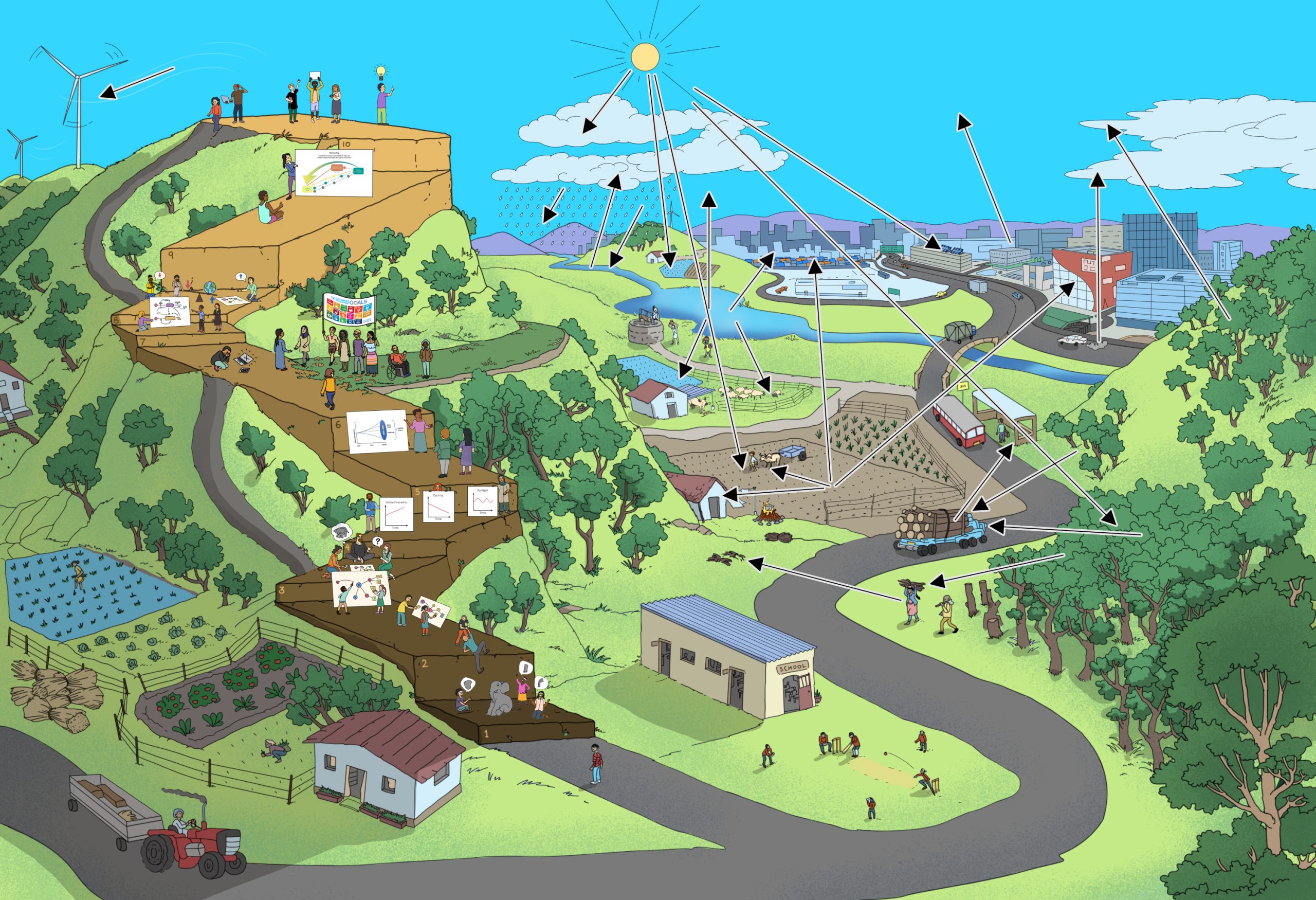Visualisation
Suitable for Step 3 of the Jeans and Chips examples
Duration
Depends on the task
Material Needed
Can be done by hand or using free software such as those used for concept maps or causal diagrams
Group size
Individual or pairs
Objective
To help learners visualize concepts, components, and their relationships, and represent them graphically.
Visualizing is a method of learning (especially supporting exploration of a topic and integration of concepts) and expression that allows one to structure their knowledge of complex topics. It uses words, logos or pictograms as symbols of interrelated components and arrows to show interrelationship.
Description
- Ask learners to gather the important information about their selected topic. They should identify the main idea or question.
- Then, they need to decide which form of visualization is most appropriate for the topic. This depends on the purpose of the organization of the information and its representation. For example:
- To prepare a hierarchical structure of multiple sub-topics and further sub-ordinate elements, a mind-map might fit best.
- To show reasons and consequences of a process, a causal map may fit best.
- To depict a process, a timeline-oriented form, like a flow chart will be suitable.
- If the description is about the components of a situation, processes, impacts, and outcomes, then a model might be the appropriate form.
Contribution to Systems Thinking competence
Visualizations can help present or highlight those elements that seems more relevant, point out which relationships show the highest causality, and what is the direction of the relationship.
Visualization helps to depict complicated and complex situations or processes by reducing and arranging elements and showing interrelationships between them, which helps us to understand them more easily.
Example

Further reading
Horan, Pat (2000). Using rich pictures in information systems teaching. Available at
http://ceur-ws.org/Vol-72/039%20Horan%20SSM.pdf
Monk, Andrew, and Steve Howard (1998). The Rich Picture: A Tool for Reasoning About Work Context. Methods & Tools. Interactions. March-April 1998. Available at
https://www.ics.uci.edu/~wscacchi/SA/Readings/RichPicture.pdf

